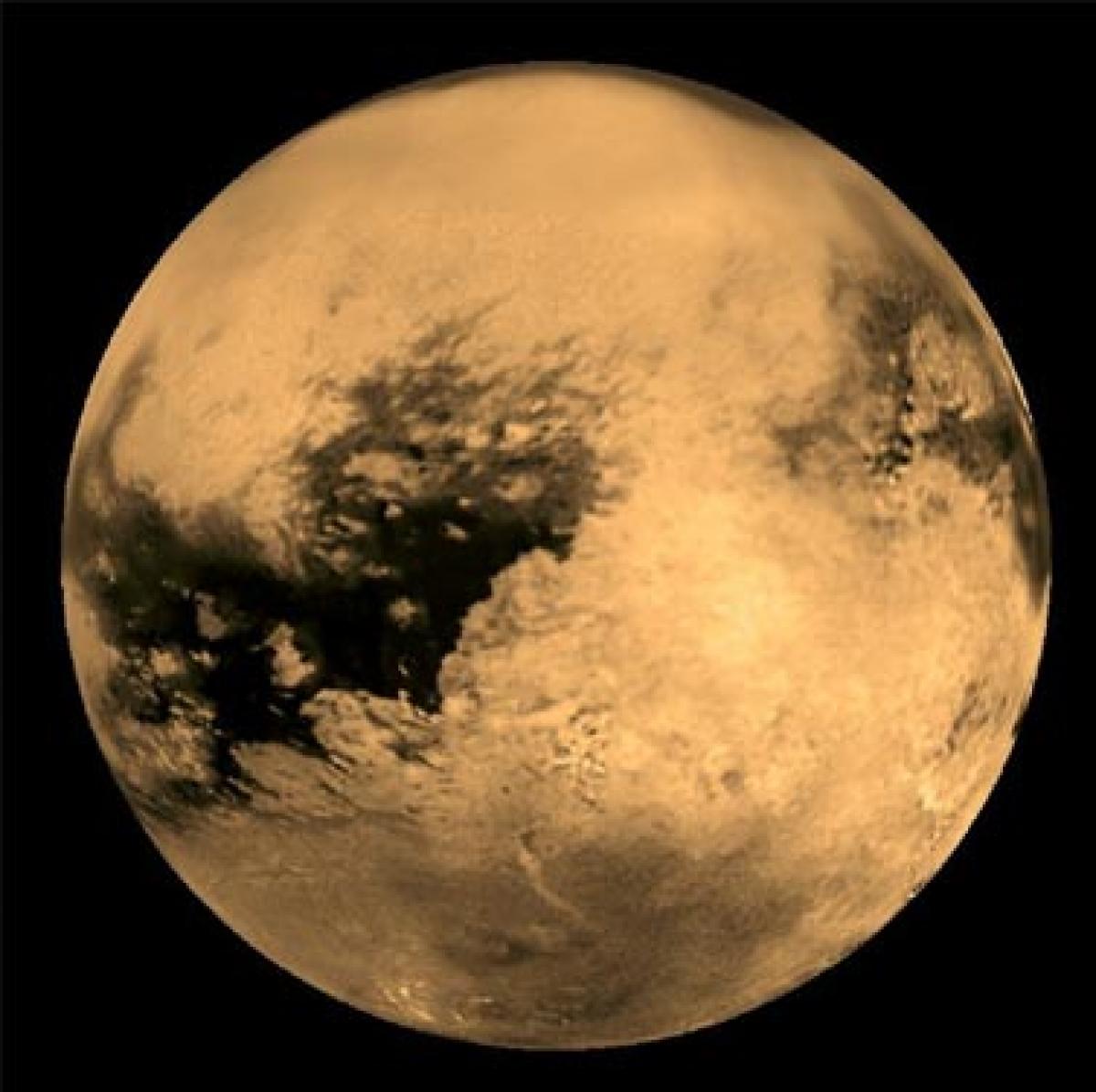Live
- Koil Alwar Thirumanjanam on Nov 26
- 16 gold medals, 485 degrees awarded to students
- TBS held Karthika Vana Mahotsav
- 135 newborns and 28 mothers die in 7 months
- Garena Free Fire Max Redeem Codes for Today (November 25): Unlock Free Skins, Diamonds & More
- NCC 2nd officer Narendra Babu secures Best Officer award
- Employees warn government to fulfill demands as KSRTC, BMTC gear up for strike
- Jagan took Rs 1,750 cr bribe from Adani: Anam
- Bhumana Abhinay hoists YSRCP flag at Everest base camp
- VHP resolves to oppose Waqf Board’s land claims
Just In

Located in Titan\'s stratosphere, the cloud is made of a compound of carbon and nitrogen known as dicyanoacetylene, an ingredient in the chemical cocktail that colours the giant moon\'s hazy, brownish-orange atmosphere.And it is not the first time NASA scientists spotted the mysterious cloud.
Washington: NASA's Cassini probe has found a strange ice cloud over Titan that appears to be made up of compounds that barely exist in the atmosphere of Saturn's largest moon.The appearance of this ice cloud goes against everything we know about the way clouds form on Titan," said lead author of the study Carrie Anderson from NASA's Goddard Space Flight Center in Greenbelt, Maryland.
Located in Titan's stratosphere, the cloud is made of a compound of carbon and nitrogen known as dicyanoacetylene, an ingredient in the chemical cocktail that colours the giant moon's hazy, brownish-orange atmosphere.And it is not the first time NASA scientists spotted the mysterious cloud.
Decades ago, the infrared instrument on NASA's Voyager 1 spacecraft spotted an ice cloud just like this one on Titan.
What has puzzled scientists ever since is this: they detected less than one percent of the dicyanoacetylene gas needed for the cloud to condense.
Recent observations from NASA's Cassini mission yielded a similar result. Using Cassini's composite infrared spectrometer, or CIRS -- which can identify the spectral fingerprints of individual chemicals in the atmospheric brew -- researchers found a large, high-altitude cloud made of the same frozen chemical.
Yet, just as Voyager found, when it comes to the vapour form of this chemical, CIRS reported that Titan's stratosphere is as dry as a desert.The puzzling appearance of the ice cloud seemingly out of thin air prompted the scientists to suggest that a different process than previously thought possibly similar to one seen over Earth's poles -- could be forming clouds on Saturn's moon Titan.Although Earth's stratosphere has scant moisture, wispy nacreous clouds (also called polar stratospheric clouds) can form under the right conditions.

© 2024 Hyderabad Media House Limited/The Hans India. All rights reserved. Powered by hocalwire.com







